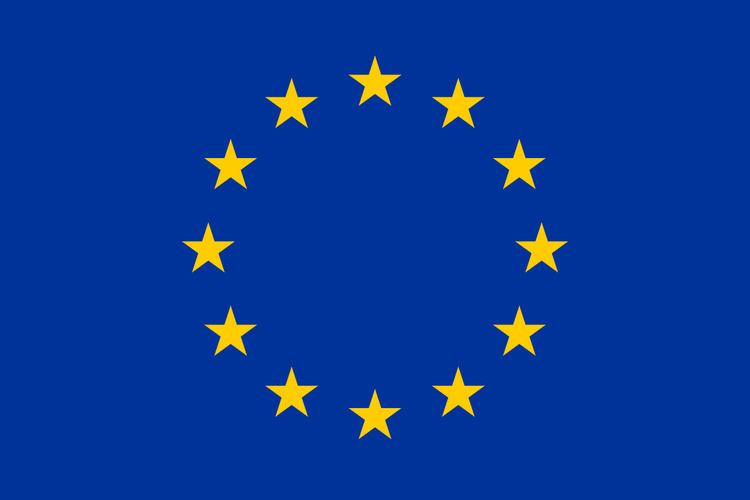Administrative body European Commission Establishment 1958 | Official languages 24 languages | |
 | ||
Type International organisation Members 28 EU member states
1 associated state | ||
The European Atomic Energy Community (EAEC or Euratom) is an international organisation founded in 1957 with the purpose of creating a specialist market for nuclear power in Europe, developing nuclear energy and distributing it to its member states while selling the surplus to non-member states. It is legally distinct from the European Union (EU), but has the same membership, and is governed by the EU's institutions. Since 2014, Switzerland has also participated in Euratom programmes as an associated state.
Contents
Currently, its main focus is on the construction of the International Fusion Reactor ITER financed under the nuclear part of FP7. Euratom also provides a mechanism for providing loans to finance nuclear projects in the EU.
It was established by the Euratom Treaty on 25 March 1957 alongside the European Economic Community (EEC), being taken over by the executive institutions of the EEC in 1967. Although other communities were merged in 1993 and 2009, the nuclear program has maintained a legally distinct nature from the European Union.
History
The Common Assembly proposed extending the powers of the European Coal and Steel Community to cover other sources of energy. However, Jean Monnet, ECSC architect and President, wanted a separate community to cover nuclear power. Louis Armand was put in charge of a study into the prospects of nuclear energy use in Europe; his report concluded that further nuclear development was needed to fill the deficit left by the exhaustion of coal deposits and to reduce dependence on oil producers. However, the Benelux states and Germany were also keen on creating a general single market, although it was opposed by France due to its protectionism, and Jean Monnet thought it too large and difficult a task. In the end, Monnet proposed the creation of separate atomic energy and economic communities to reconcile both groups.
The Intergovernmental Conference on the Common Market and Euratom at Val Duchesse in 1956 drew up the essentials of the new treaties. Euratom would foster co-operation in the nuclear field, at the time a very popular area, and would, along with the EEC, share the Common Assembly and Court of Justice of the ECSC, but not its executives. Euratom would have its own Council and Commission, with fewer powers than the High Authority of the European Coal and Steel Community. On 25 March 1957, the Treaties of Rome (the Euratom Treaty and the EEC Treaty) were signed by the ECSC members and on 1 January 1958 they came into force.
To save on resources, these separate executives created by the Rome Treaties were merged in 1965 by the Merger Treaty. The institutions of the EEC would take over responsibilities for the running of the EEC and Euratom, with all three then becoming known as the European Communities even if each legally existed separately. In 1993, the Maastricht Treaty created the European Union, which absorbed the Communities into the European Community pillar, yet Euratom still maintained a distinct legal personality.
The European Constitution was intended to consolidate all previous treaties and increase democratic accountability in them. The Euratom treaty had not been amended as the other treaties had, so the European Parliament had been granted few powers over it. However, the reason it had gone unamended was the same reason the Constitution left it to remain separate from the rest of the EU: anti-nuclear sentiment among the European electorate, which may unnecessarily turn voters against the treaty. The Euratom treaty thus remains in force relatively unamended from its original signing.
As of 2016, EAEC had co-operation agreements of various scopes with eight countries: U.S., Japan, Canada, Australia, Kazakhstan, Ukraine, Uzbekistan and South Africa.
The United Kingdom announced its intention to withdraw from the EAEC on 26 January 2017, following on from its decision to withdraw from the European Union.
Achievements
In the history of European regulation, Article 37 of the Euratom Treaty represents pioneering legislation concerning binding transfrontier obligations with respect to environmental impact and protection of humans.
Presidents of the EAEC
The five member Commission was led by only three presidents while it had independent executives (1958–1967), all from France:
